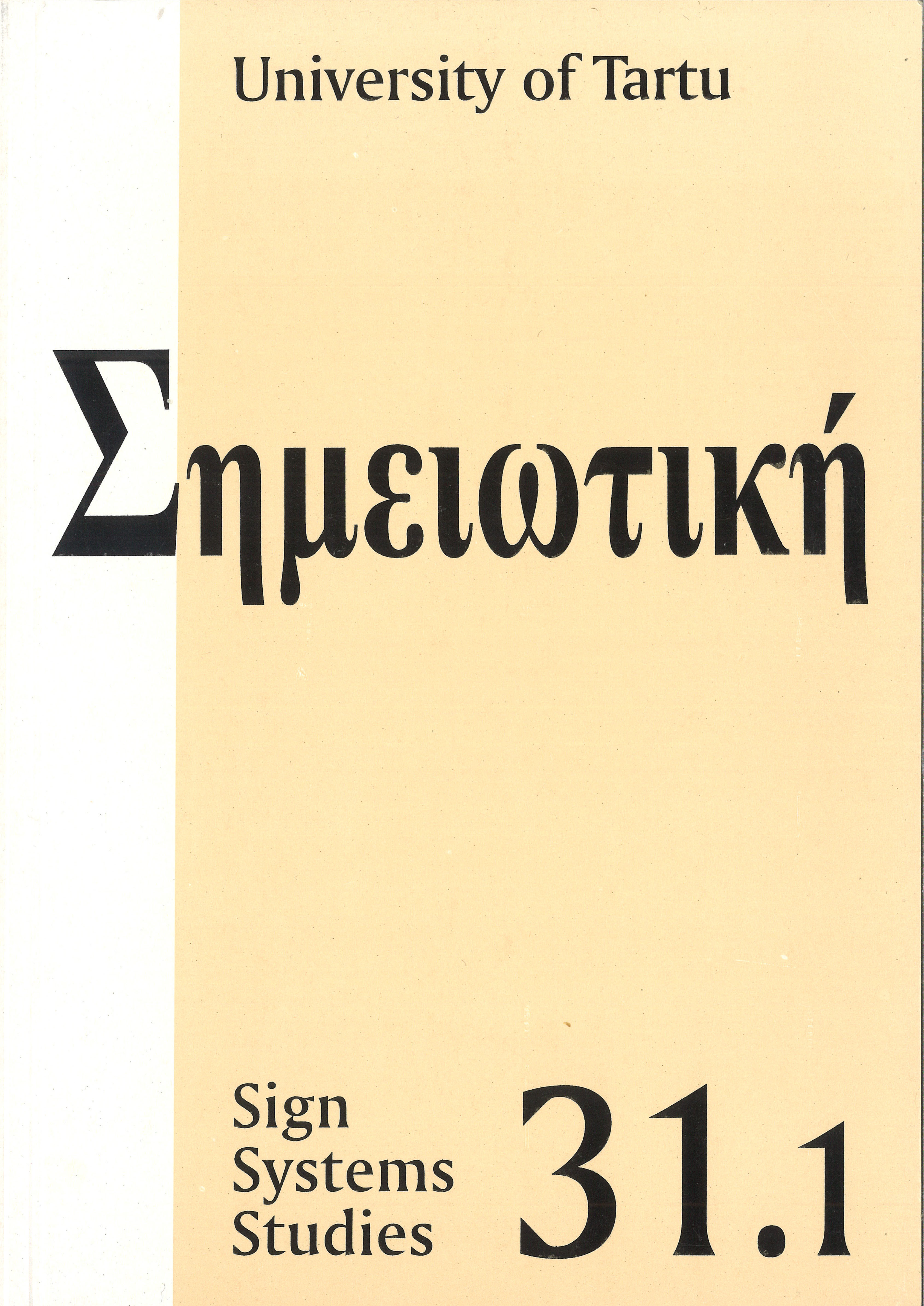Modeling, dialogue, and globality: Biosemiotics and semiotics of self. 2. Biosemiotics, semiotics of self, and semioethics
DOI:
https://doi.org/10.12697/SSS.2003.31.1.03Abstract
The main approaches to semiotic inquiry today contradict the idea of the individual as a separate and self-sufficient entity. The body of an organism in the micro- and macrocosm is not an isolated biological entity, it does not belong to the individual, it is not a separate and self-sufficient sphere in itself. The body is an organism that lives in relation to other bodies, it is intercorporeal and interdependent. This concept of the body finds confirmation in cultural practices and worldviews based on intercorporeity, interdependency, exposition and opening, though nowadays such practices are almost extinct. An approach to semiotics that is global and at once capable of surpassing the illusory idea of definitive and ultimate boundaries to identity presupposes dialogue and otherness. Otherness obliges identity to question the tendency to totalizing closure and to reorganize itself always anew in a process related to ‘infinity’, as Emmanuel Levinas teaches us, or to ‘infinite semiosis’, to say it with Charles Sanders Peirce. Another topic of this paper is the interrelation in anthroposemiosis between man and machine and the implications involved for the future of humanity. Our overall purpose is to develop global semiotics in the direction of “semioethics”, as proposed by S. Petrilli and A. Ponzio and their ongoing research.


